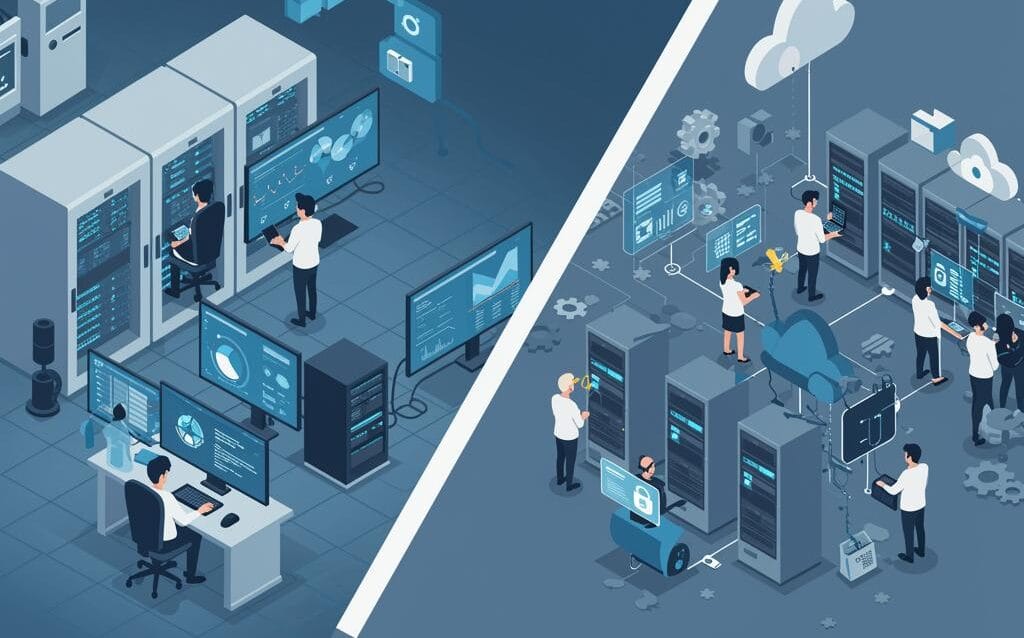Managed Services vs Self-Managed Cloud: Which is Right?
Managed Services vs. Self-Managed: A Decision Framework for Cloud Resources
Choosing the right approach for managing your cloud resources – whether to opt for managed services or a self-managed model – is a critical decision that can significantly impact your organization’s efficiency, cost, security, and overall success in the cloud. This decision hinges on a variety of factors, including your in-house expertise, budget constraints, business goals, and risk tolerance. This blog post provides a comprehensive framework to help you navigate this complex choice and make an informed decision that aligns with your specific needs.
Understanding the Core Concepts
What are Managed Services?
Managed services involve outsourcing the responsibility of managing your cloud resources to a third-party provider. This provider typically handles tasks such as:
- Infrastructure Management: Server provisioning, maintenance, and scaling.
- Operating System Management: Patching, updates, and security hardening.
- Database Administration: Backup, recovery, performance tuning, and security.
- Security Management: Threat detection, vulnerability scanning, and incident response.
- Monitoring and Alerting: 24/7 monitoring of your resources and proactive alerting of potential issues.
The key benefit of managed services is that it frees up your internal IT team to focus on strategic initiatives rather than day-to-day operational tasks.
What is Self-Managed?
In a self-managed model, your organization takes full responsibility for managing all aspects of your cloud resources. This includes:
- Infrastructure Provisioning: Setting up and configuring servers, networks, and storage.
- System Administration: Installing, configuring, and maintaining operating systems and applications.
- Security Implementation: Implementing and managing security controls, such as firewalls and intrusion detection systems.
- Monitoring and Troubleshooting: Monitoring resource utilization, identifying performance bottlenecks, and resolving issues.
Self-management requires a skilled and dedicated IT team with expertise in cloud technologies. It offers greater control and customization but also places a heavier burden on your internal resources.
Key Factors to Consider
In-House Expertise and Resources
The availability of skilled cloud professionals within your organization is a primary factor. Consider the following:
- Skill Gap Analysis: Identify any gaps in your team’s expertise in areas such as cloud security, database administration, and system administration.
- Resource Allocation: Assess whether your existing IT team has the bandwidth to manage your cloud resources effectively without impacting other critical projects.
- Training and Development: Evaluate the cost and time required to train your team on the necessary cloud technologies.
If you lack the necessary expertise or resources, managed services may be a more viable option.
Cost Analysis
A thorough cost analysis is crucial for determining the most cost-effective approach. Consider both direct and indirect costs:
- Managed Services Costs: Include monthly fees, setup costs, and any additional charges for specific services.
- Self-Managed Costs: Include salaries for IT staff, training costs, software licenses, and infrastructure costs.
- Hidden Costs: Consider the cost of downtime, security breaches, and missed opportunities due to inefficient resource management.
While managed services may seem more expensive upfront, they can often lead to lower overall costs by reducing the need for expensive in-house expertise and minimizing downtime.
Security and Compliance
Security is paramount in the cloud. Evaluate your organization’s security requirements and compliance obligations:
- Security Expertise: Assess your team’s ability to implement and maintain robust security controls in the cloud.
- Compliance Requirements: Determine whether your organization is subject to any industry-specific regulations, such as HIPAA or PCI DSS.
- Risk Assessment: Identify potential security risks and vulnerabilities in your cloud environment.
Managed services providers often have specialized security expertise and can help you meet your compliance requirements. However, you must carefully vet potential providers to ensure they have strong security practices.
Control and Customization
The level of control and customization you require is another important factor:
- Customization Needs: Determine whether you need to heavily customize your cloud environment to meet specific business requirements.
- Control Over Infrastructure: Assess how much control you need over the underlying infrastructure.
- Vendor Lock-In: Consider the potential for vendor lock-in with managed services and the ease of switching providers if necessary.
Self-management offers greater control and customization, but it also requires more effort and expertise. Managed services can limit your flexibility but may be sufficient for organizations with standard requirements.
Making the Decision
There’s no one-size-fits-all answer to the managed services vs. self-managed question. The best approach depends on your specific circumstances. Consider the following questions:
- Do we have the in-house expertise to manage our cloud resources effectively?
- What is our budget for cloud management?
- What are our security and compliance requirements?
- How much control and customization do we need?
- What is our risk tolerance?
By carefully evaluating these factors, you can make an informed decision that aligns with your organization’s goals and resources. You might also consider a hybrid approach, where you use managed services for some aspects of your cloud environment and self-manage others.
Conclusion
Choosing between managed services and self-managed cloud resources is a strategic decision with long-term implications. By carefully considering the factors outlined in this blog post, you can make the right choice for your organization, optimize your cloud investments, and achieve your business objectives. Remember to regularly re-evaluate your decision as your needs and the cloud landscape evolve.

